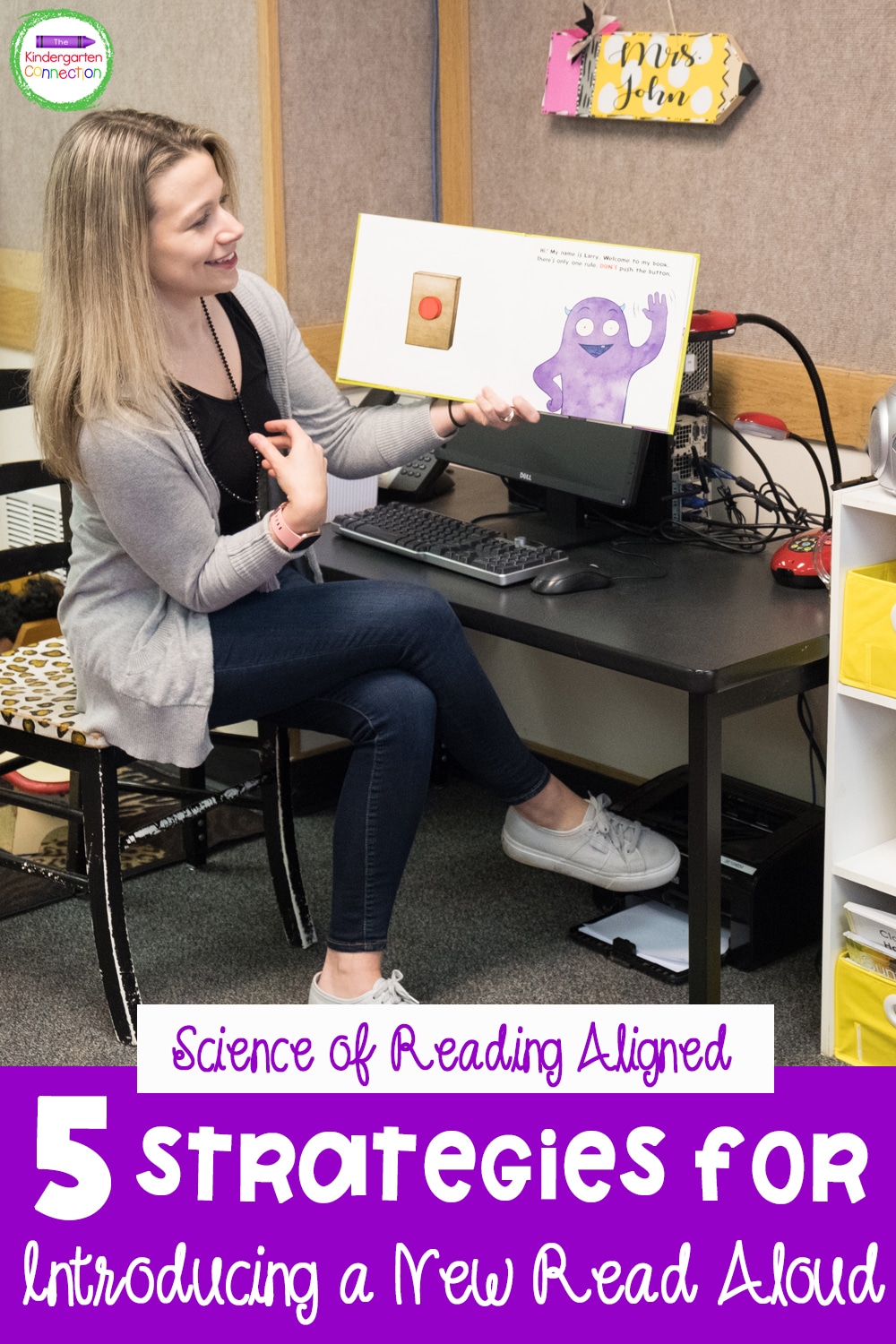5 Strategies for Introducing New Read Alouds in the Classroom
This post contains affiliate links for your convenience. View our full disclosure policy here.
Teachers are frequently reading to their students, but did you know that there is a “right way” to introduce new books to students? A good read aloud and discussion is much more than simply reciting words from the page. The following strategies for introducing new read alouds in the classroom will help your students remain interested as well as engaged in the text itself!
*For even more teacher tips and ideas, join us in the Print and Play Club and have unlimited access to amazing resources and activities for Pre-K & Kindergarten!

5 Strategies for Introducing New Read Alouds in the Classroom
You’ve been in this position before when starting a new read aloud in the classroom.
Per the reading curriculum your district mandates you follow with fidelity, you ask your students to open to the story on page x, and you see half the class’s eyes immediately glaze over.
And maybe this is even a story you aren’t overly enthusiastic about, either.
Thinking you’d better get the story read so you don’t lose everyone else, you just jump in feet first and secretly cross your fingers behind your back, hoping you get through the story and the week with minimal conflict from your students.
Don’t worry. It’s happened to all of us.
But here’s the thing…
You’re (we’re – remember, you aren’t alone!) doing it all wrong. And this method is especially wrong if you already have students who are only marginally interested in the story anyway.
Ready to fix it? I’m here to help! Here they are… my 5 strategies for introducing new read alouds in the classroom!
Look at the Book Cover or Title Illustration
Before you ever ask your students to just turn to page x to begin reading the story, you must prep your class for what they are to learn from the text.
Ask the children to study the cover of the book or the image on the title page. What do they notice? To get the conversation started, try asking the following kinds of questions:
- What is happening?
- Does it look like the story will be fiction or non-fiction?
- When have you seen something like this before?
- Explain what the picture looks like.
- Does the illustration or picture seem to match the title of the story? Why or why not?
- What does the title tell us about the story?
- Do the image and title remind you of anything you have experienced?
Open to the Story and Read the Pictures
The illustrations or pictures included in a story, whether it be fiction or non-fiction, are incredibly important.
Printing images is costly, so if a publisher decides to include specific illustrations or pictures, it is a deliberate decision. They must add to the story. So, before you begin a new read aloud in the classroom take a moment to ask your students what they can learn from the pictures.
Some educators call this a picture walk. Some just call it previewing the text.
Whatever the name you assign, take the time to draw your students’ attention to important images that may give away bits and pieces of what they can expect from the story. In fiction stories, this may be plot elements, while in non-fiction it may be picture captions and diagrams with labels.
Ask students questions like, “What is happening in this picture?” and “What do you notice? What do you wonder?” Encourage students to answer in complete sentences. This helps students develop oral language skills and acquire vocabulary they might need prior to reading a new text.
RELATED RESOURCE: Circle Time Chants and Activities Bundle
Discuss Possible Predictions and Make a List of Questions
Making predictions and asking questions are two reading strategies that most reading curriculum formally teach, and they are both things that active readers naturally do.
Many teachers won’t touch on these strategies until they read the story with their students, however, starting them before the text is ever read allows for deeper discussion throughout the reading as well as following the reading.
Invite children to make predictions as well as write down on the whiteboard any questions they might have from previewing the pictures and the text.
Introduce New Vocabulary and Concepts
The text selected for students is often at their instructional level, which means that children need scaffolding and support as they attempt to read it.
One way teachers can minimize the frustration or boredom some students experience is by introducing them to new vocabulary and concepts before reading the text at all. This is especially true of non-fiction text as well as historical fiction.
Relate Concepts to Students’ Background Knowledge and Personal Experiences
To really get students interested in a selected text, it is imperative to compare the concepts in the story to their personal experiences and background knowledge.
This gives the students a feeling of confidence as they begin actually reading, making them feel they already have a connection with the characters or concepts. Of all of the steps, this one cannot be skipped.
New Read Alouds in the Classroom Means New Learning
The thing about spending time to complete the five strategies for introducing new read alouds as stated above is this… it takes time. And sometimes you feel crunched and pressured and you don’t feel like you have any extra time.
But you can’t skip these steps. Even if you are only using one of the above strategies to keep your students’ minds from wandering elsewhere before you even begin reading, you will see improvement.
You will find your students interacting more with the story as they read, and developing deeper interests in new topics. And you will find as a result, they will become better readers, too!
***As we continue to learn about the Science of Reading, we want to be up-to-date so that our articles are research-based. This post has recently been updated to be Science of Reading aligned.***
Want unlimited access to even MORE of our activities and resources? Join us in the Print and Play Club!
Your planning will be so much easier with instant access to:
- hundreds of printables
- every TKC resource
- video lessons
- a digital games vault
- Pre-K and TK Scope & Sequence
- a PLAYlist of fun songs AND activities
- professional development
- additional teacher resources…
Be sure to request an invitation so that you don’t miss your chance to be part of the best early childhood club around!
Guest post by Sarah from Stay at Home Educator
- The Literacy-Rich Classroom - December 15, 2022
- Teaching Phonics – Your Questions Answered - November 17, 2022
- 22 Telltale Signs of a Reading Disability - November 2, 2022




Quite helpful